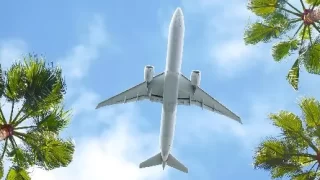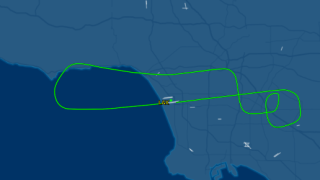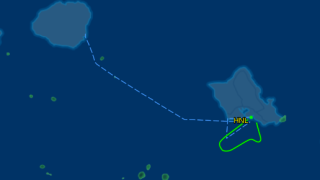A smoke in cabin event has resulted in a Hawaiian Airlines diversion following an emergency being declared. This event occurred on Monday, February 20, when the plane, a wide-body Airbus A330, was about halfway between Hawaii and its destination, Phoenix.
Hawaiian Airlines Flight 36 departed Honolulu at 10:56 AM. At about three hours into the flight, which had a total passenger and crew load of 288 people, smoke began to enter the cabin. That was the result of a malfunctioning fan. The fan’s location was soon determined, and it was switched off.
Nonetheless, the flight diverted to San Francisco instead of continuing to Phoenix after the emergency was declared 0ut of an abundance of caution. Phoenix is 2,916 miles from Honolulu, whereas San Francisco is 2,298 miles.
Once the smoke dissipated with the malfunctioning fan deactivated, the captain downgraded the status from emergency to urgent. The plane nonetheless received priority for its early landing in San Francisco at 6:06 PM.
Emergency crew met the plane on arrival, although Hawaiian said there were no medical emergencies onboard.
Passengers had reported that the smoke event lasted about 15 minutes before it was resolved. If you were on board Monday’s HA 36, please let us know what happened.
After the plane was inspected, it continued to its destination in Phoenix. The second flight left SFO at 8:53 PM and arrived at PHX at 11:28 PM. Hawaiian Airlines said about the incident, “Safety is our priority, and we apologize to our guests for the inconvenience.”
FAA safety forum and an incident investigation will follow.
You’ll recall the same flight traveling in the opposite direction, HA 35, on which Hawaiian suffered a mass injury event due to unexpected turbulence about thirty minutes before landing in Honolulu. Dozens of passengers and crew were injured in that incident which received national attention and, in part, helped trigger the airline safety forum, which the FAA is convening next month.
The FAA’s acting chief has called for an airline safety review related to multiple recent near-miss incidents and other safety concerns. It will “examine the U.S. aerospace system’s structure, culture, processes, systems, and integration of safety efforts.” That will culminate in the aviation safety summit to determine what steps “the aviation community needs to take to maintain our safety record,” according to the FAA.
The Hawaii flight incidents of concern also include the United Airlines 777 that lost altitude and came dangerously close to impacting the Pacific Ocean on takeoff from Maui in December. In addition, there was the recent Honolulu airport runway incursion between a United jetliner and a cargo plane that the FAA said risked catastrophe.
The FAA wants to preserve what is the “safest period in aviation history.” The AFA (flight attendant’s) union head is endorsing the safety efforts, saying, “U.S. aviation is the safest transportation system in the world. But we cannot ever rest. It takes constant vigilance and engagement of all stakeholders in our collective responsibility to safety.”
Mid-Way point to Hawaii determines where planes divert.
Hawaii flights typically turn around when mechanical, medical, or other emergencies occur at any point until the mid-way point between the Pacific coast and Hawaii is reached, which is about 2 1/2 hours. We are always aware of it when flying transpacific. The vast distance from diversion, being among the longest in the Pacific, is a source of obvious concern.
In this case, the plane was closer to San Francisco than Honolulu when the smoke problem occurred.
Kudos to Hawaiian Airlines for safely resolving the mechanical problem and the flight diversion.
Get Breaking Hawaii Travel News







My wife and I were on this flight. I noticed the smell of something electrical burning and after a few minutes others seemed to start noticing as well including the flight crew. They went up and down the aisles feeling the overhead compartments for heat and checking the bathrooms in case someone was smoking, not knowing the source at that point. We did not see smoke at any time, just smelled fumes. I told my wife we would likely head for San Francisco as it was the closest divert and this would be considered an in-flight emergency. After a few minutes the captain announced that it was a faulty recirculation fan that was shut off and we would be diverting to San Francisco. The crew and captain did a great job considering the circumstances.
Hey what’s going on with hawaiian airline your tsa is complicated things at honolulu
Los angeles Airport your gate is way down the other side of the airport
A idiot at los angeles airport hit the plane door disabling the plane after sitting 4hrs in the plane and canceling there flight it was just so bad not to be able to wait in a more comfortable area
Now that smoke problem
OMG your airlines use to be awesome please fix it and maintain your plane and organize it better before you guys shut down to
Hawaiian gates at LAX are a nightmare for the most fit person. They got bumped by Delta and LAX gave them these terrible gates so I am not sure they can do anything about it. But we don’t have to fly Hawaiian out of LAX if the excessively long walk is a problem. It’s a shame that they will lose a lot of business.